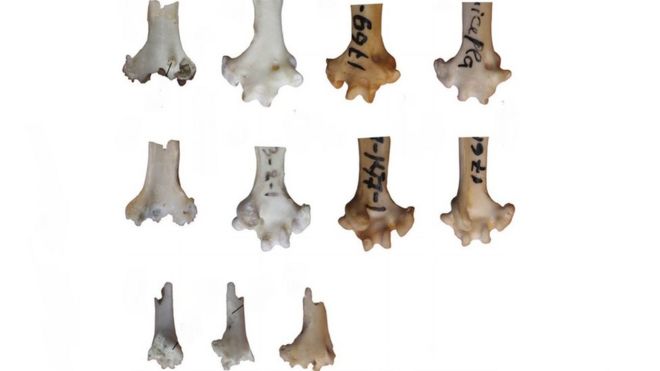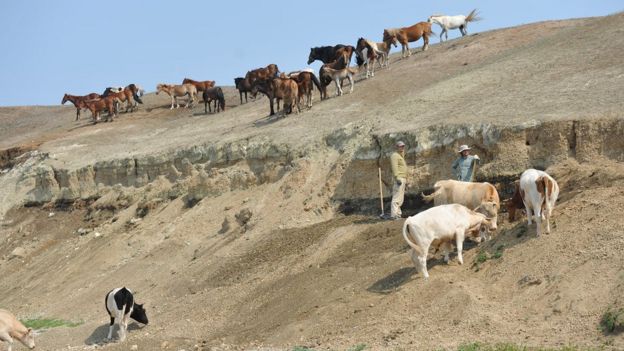Parrot fossil unearthed in Siberia
- 1 hour ago
- Science & Environment
 DR NIKITA ZELENKOV
DR NIKITA ZELENKOV
A parrot fossil has been unearthed in Siberia - the furthest north one of these birds has ever been found, a study reports.
A single parrot bone was discovered in the Baikal region and dates to between 16 and 18 million years ago.
It suggests that the birds, which today mainly inhabit tropical and sub-tropical regions, may once have been widespread in Eurasia.
It is also the first time a fossil parrot has been found in Asia.
The research is published in the journal Biology Letters.
The study's author Dr Nikita Zelenkov, from the Borissiak Paleontological Institute of the Russian Academy of Sciences in Moscow, said he was surprised by the discovery.
"No-one before has ever found evidence of their presence in Siberia," he said.
 ALEXANDER SIZOV
ALEXANDER SIZOV
The researchers discovered the ancient parrot's remains at Tagay Bay in the east of Siberia.
"We were excavating all kinds of animals there, and mostly they were rodents, rhinos, cats, hippos and others," said Dr Zelenkov.
"But this locality is also interesting because it preserves a rich community of fossil birds. But no exotic birds have been found there before."
Dr Zelenkov discovered part of a bone called a tarsometatarsus, which is found in the lower leg of birds. After comparing it with other species, he discovered that it belonged to a small parrot.
"Unfortunately, this find is not good enough to reconstruct the appearance or lifestyle of this parrot, but we can see that it was rather similar to modern ones. So it was likely a very modern-looking small bird, around the size of a budgerigar."
It shares features with another earlier fossil parrot bone in Germany, reported in a study published in 2010, belonging to a species called Mogontiacopsitta miocaena.
Migration routes
Commenting on the research, Dr David Waterhouse, senior curator of natural history at Norfolk Museums Service, said: "What's interesting about this is how far north the bird is and how far east it is."
However, he said it was not completely unexpected to find a parrot in Siberia.
"Even though today we associate parrots with tropical and sub-tropical environments, you can get parrots in the Himalayas," he said.
"So they can deal with those climates - and during the Miocene period it was even warmer than it is now. So when you put it together it is not surprising."
He added that the discovery could change our understanding of how early parrots spread around the world and moved into the Americas.
Previous theories suggested they may have flown from Africa into the Americas, but this find suggests another route.
"This paper suggests - and it is only a suggestion but it is an interesting one - that we have parrots in Asia and the easiest possible route from Asia to North America is across what's now the Bering Straight, across from Russia into Canada and Alaska," said Dr Waterhouse.
He added: "They've found something that even if it doesn't give us all the answers, it does raise more questions and starts us thinking about new hypotheses - and that's the kind of science that I like."
Follow Rebecca on Twitter: @BBCMorelle

No comments:
Post a Comment